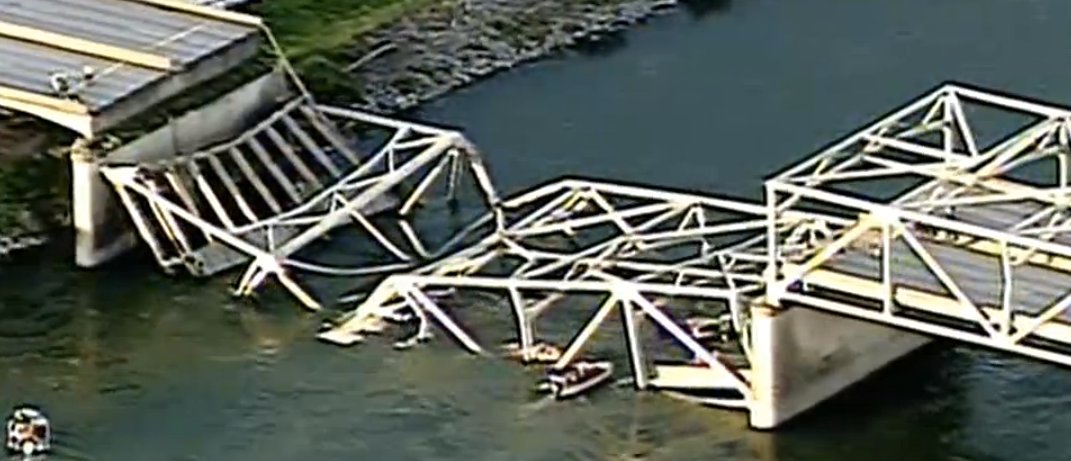

It’s been a rough week for bridges around the U.S. At about 7 p.m. local time in Washington state yesterday a bridge spanning the Skagit river north of Seattle (part of Interstate 5) collapsed after a truck carrying a tall load collided with one of the spans, sending two cars plunging into the river below. The three people in those cars all survived with non-life-threatening injuries, but it should probably come as a surprise to no one that the bridge–which services about 71,000 crossings of the Skagit river every day–is rated “functionally obsolete” by the Federal Highway administration.
As noted above, the collapse didn’t happen purely due to the poor state of the bridge. A tractor-trailer carrying an overly tall load struck one of the overhead supports on the bridge as it crossed, precipitating the collapse. That doesn’t sound like something that should happen, but the author acknowledges that he is not a civil engineer and does not understand all the nuances of bridge building.
Although to really understand this particular collapse one would need to be a civil engineer circa 1955, which is when this particular span of I-5 was constructed. The rating of “functionally obsolete” doesn’t mean that this bridge was structurally deficient, but that its design is outdated, particularly in some specific ways. For instance, its shoulders were too narrow. And perhaps more importantly, its overhead clearance was too low.
In a November 2012 inspection it scored 47 out of 100 on a sufficiency rating. And it’s not alone. A quarter of Washington state’s 7,840 bridges are considered structurally deficient or functionally obsolete. And lest you be shaking your head wondering how the bureaucrats in Washington state ever let it come to this, be advised: If you’re currently in the U.S., your state likely isn’t doing much better. Collectively America holds a D+ rating on its infrastructure report card issued by the American Society of Civil Engineers (who actually are civil engineers). Those engineers estimate we need $3.6 trillion in investment by 2020 to shore up our crumbling infrastructure (there are a few ways to do this, like this and this). No big deal.
In other, more video-friendly infrastructure news, this 300-yard wooden railway bridge caught fire and collapsed in Lampasas County, Texas, (that’s just northwest of Austin) earlier this week. Firefighters were on the scene for 15 hours trying to save it this rail link spanning the Colorado river before it succumbed to the fire damage. This bridge–which was built in 1910 and still handles regular railway freight–didn’t collapse from infrastructure deficiencies (that we know of). But it did collapse spectacularly.

